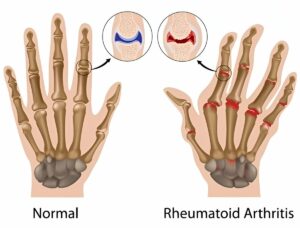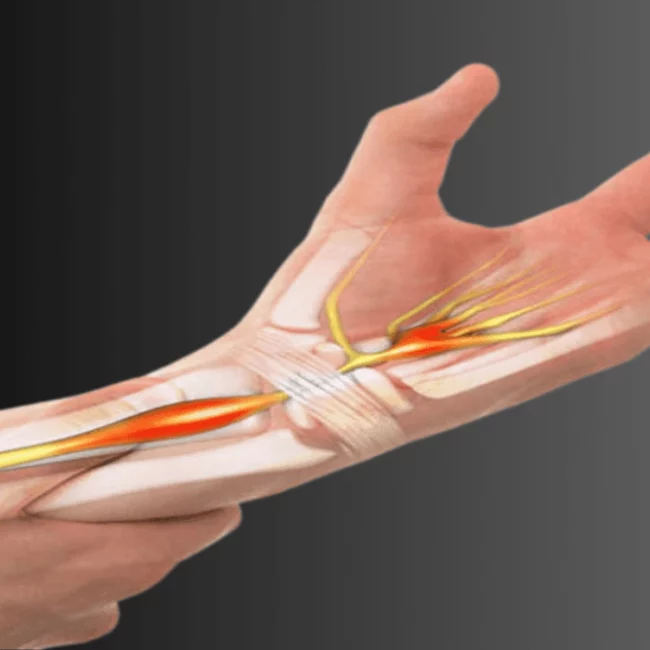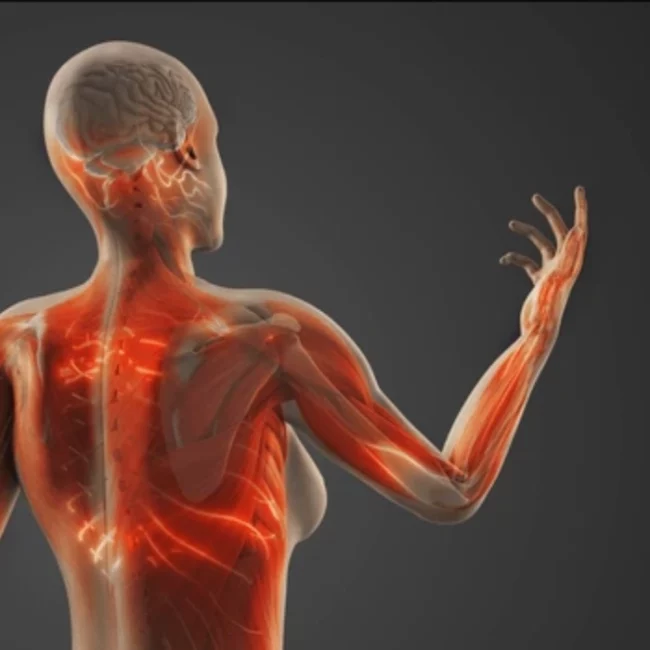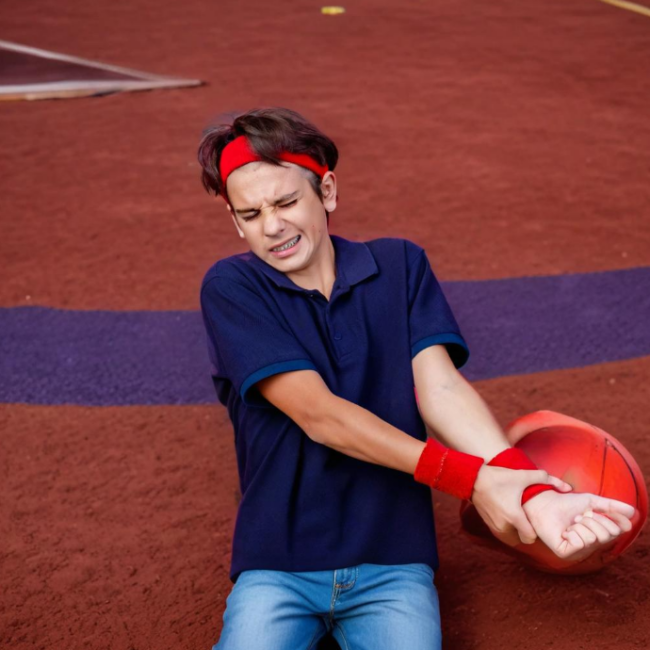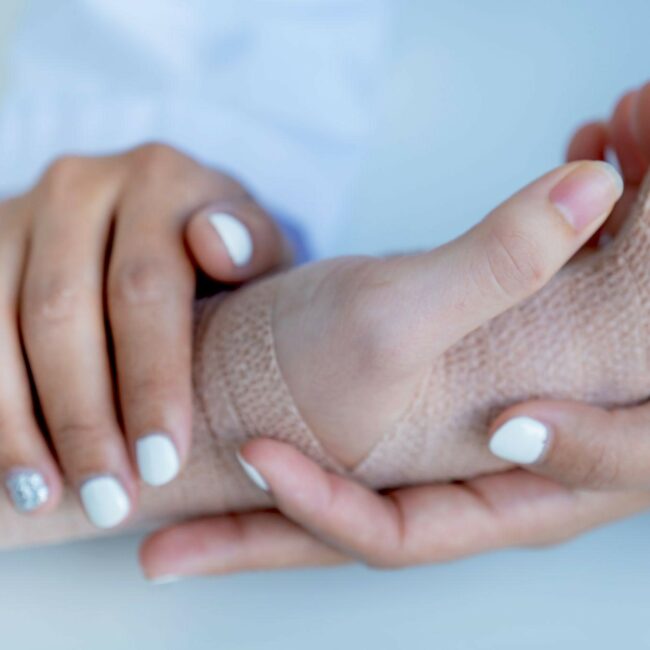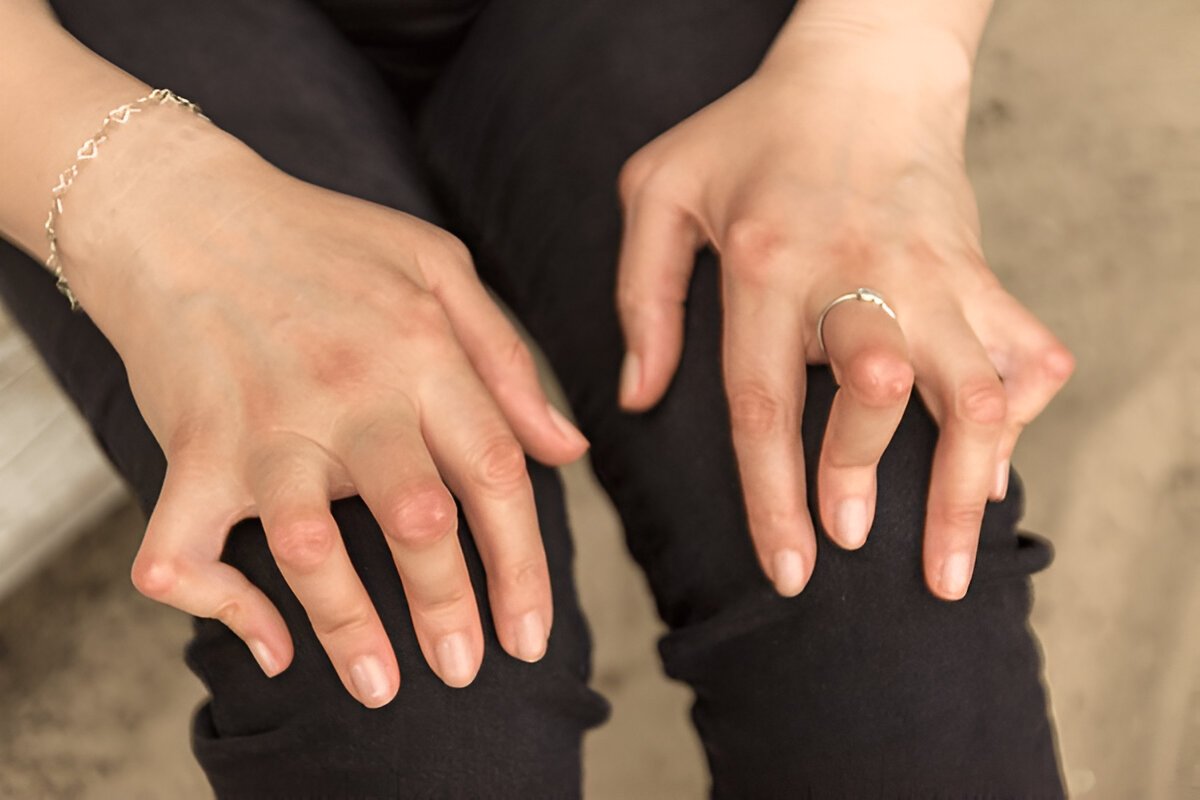
Innovative Treatments for Rheumatoid Arthritis Hand Deformities
Rheumatoid Arthritis, the chronic autoimmune disease of joints, tissues, and bones has severe manifestations involving hands with joint deformity and impairment of independence and quality of life for affected patients. Progressive degeneration affects the cartilage, ligaments, and tendons within hands and fingers; hence, progressive degeneration, leading to a gradual deterioration, may lead to the degenerative features like joint pain, loss of motion and deformity of the hand in severe cases.
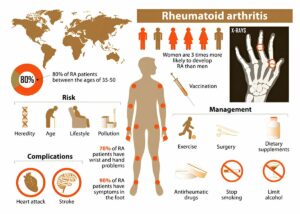
Fortunately, advances in medicine have provided a range of treatments for rheumatoid arthritis hand deformities, from non-surgical therapies to cutting-edge surgical interventions. The right approach can help patients manage symptoms, regain function, and improve hand mobility.
This guide will cover:
- How RA leads to hand deformities
- Common types of RA-related hand deformities
- Non-surgical treatments for rheumatoid arthritis hand deformities
- Surgical options for severe deformities
- Rehabilitation and recovery after treatment
- Frequently asked questions
Knowing the latest treatments that can be utilized for RA hand deformities in case you or a loved one is suffering, helps in informed decisions for better hand function and pain relief.
How Rheumatoid Arthritis Causes Hand Deformities
Rheumatoid arthritis involves chronic autoimmune disease of the synovium, which is the protective lining of the joints. Unlike osteoarthritis, which arises due to wear and tear, rheumatoid arthritis results in inflammation, swelling, and the more progressive nature of joint damage due to the immune system attacking healthy joint tissues.
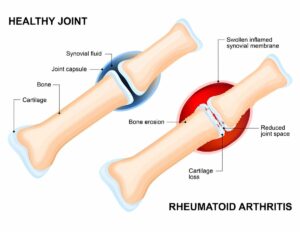
Over time, this persistence leads to the erosion of cartilage, weakening of ligaments, and stretching of tendons, which causes improper alignment and instability of joints. The hands and fingers are more susceptible because of the number of small joints it has, which will only efficiently work when the tendons and ligaments are in proper functioning.
As the disease progresses, the following can be expected:
- The synovium thickens due to chronic inflammation, restricting normal joint movement.
- Decreased joint stability due to the erosion of cartilage and bone.
- Tendon weakening or ruptures, often causing characteristic deformities such as swan neck, boutonnière deformity, and ulnar deviation.
- Laxity of the ligaments which causes the fingers and thumb to shift out of alignment.
- Presence of rheumatoid nodules, small firm lumps found near joints which further affect their function and grip strength.
Without early intervention and treatment, these structural changes can become permanent and disabling, making it hard for individuals to perform simple tasks such as gripping objects, writing, or buttoning clothing. The aim of treatment is to slow the disease progression, preserve hand function, and prevent irreversible deformities.
Common Types of Rheumatoid Arthritis Hand Deformities
RA can cause various deformities depending on which joints are affected. The most common ones include:
1. Swan Neck Deformity
Definition: Hyperextension of the middle joint, PIP and flexion of the distal joint, DIP.
Symptoms: Pain and inability to hold objects with difficulty in extending or flexing fingers.
Causes: Chronic inflammation weakening the tendons and ligaments.
2. Boutonnière Deformity
Definition: Flexion at the PIP and hyperextension at the DIP.
Symptoms: Pain and swelling. It is not easy to extend the finger straight.
Causes: Damage to tendons and disruption of the extensor mechanism.
3. Ulnar Deviation (Ulnar Drift)
Definition: The fingers drift to the pinky side of the hand.
Symptoms: Inability to grip or pinch things, pain, and stiffness.
Causes: Weakening of ligaments that make fingers drift out of alignment.
4. Z-Shaped Thumb Deformity
Definition: The thumb bends into a Z-shape that interferes with mobility and grip.
Symptoms: Reduced pinch strength, discomfort, and difficulty in grasping objects.
Causes: An imbalance in the tendons that support the joint of the thumb.
5. Rheumatoid Nodules
Definition: Firm lumps under the skin near joints.
Symptoms: May be painless but can cause discomfort if they press on nerves.
Causes: Chronic inflammation leading to fibrous tissue formation.
Non-Surgical Treatments for Rheumatoid Arthritis Hand Deformities
For mild to moderate RA-related hand deformities, non-surgical treatments can help reduce pain, maintain function, and prevent progression.
1. Medications
Disease-Modifying Anti-Rheumatic Drugs (DMARDs): Reduce inflammation and slow joint damage.
Biologic Agents: Specific immune system pathways are targeted to avoid additional damage.
Nonsteroidal Anti-Inflammatory Drugs (NSAIDs): Used to ease pain and swelling.
Corticosteroid Injections: Localized reduction of inflammation for the short term.
Tip: Early treatment with DMARDs and biologics is essential in preventing significant deformities.
2. Hand Therapy and Exercises
Range-of-Motion Exercises: Used to avoid stiffness and enhance flexibility.
Strengthening Exercises: Used to retain grip and dexterity.
Joint Protection Techniques: Teaches adaptive ways of performing daily tasks without causing excessive strain on the joint.
Tip: Regular hand exercises prescribed by a physiotherapist can improve function and delay deformities.
3. Splints and Assistive Devices
Splints & Braces: Help support weakened joints and reduce stress on affected fingers.
Adaptive Tools: Ergonomic grips, larger handles, and specialized utensils make daily tasks easier.
Tip: Wearing a night splint can prevent deformity progression by keeping joints in a neutral position.
4. Occupational Therapy
Helps patients modify their environment to accommodate hand deformities.
Offers supportive devices for writing, dressing, and cooking.
Instructs energy-saving measures to minimize joint load.
Surgical Interventions for Rheumatoid Arthritis Hand Deformities
In cases where deformities are significant, painful, or interfere with hand function, surgery may be required. Surgical intervention can restore deformities, alleviate pain, and improve range of motion.
1. Synovectomy
- Removes the inflamed synovial tissue to slow the rate of joint destruction.
- Most effective at early stages of RA before irreversible joint damage.
2. Tendon Repair
- Reconstructs or releases damaged tendons to restore finger movement.
- Assists correcting swan neck and boutonnière deformities.
3. Joint Fusion (Arthrodesis)
- The process of fusing affected joints together to eliminate the pain and enhance stabilization.
- Best suited for severe deformities where mobility has already been involved.
4. Joint Replacement (Arthroplasty)
- Replaces a damaged joint with an artificial implant.
- It is best-suited for advanced RA with severe joint destruction.
Tip: Modern joint implants allow for better movement and durability.
Rehabilitation and Recovery After Surgery
A planned rehabilitation program is critical for best recovery following surgical treatment of rheumatoid arthritis hand deformities.
Immobilization (First 2-4 Weeks): The hand is immobilized in a splint or cast.
Physical Therapy (4-8 Weeks): It emphasizes gentle exercises for mobility to restore function.
Strength Training (8-12 Weeks): Gradual grip and dexterity exercises enhance control.
Return to Activities (3-6 Months): Most patients regain function with consistent therapy.
Frequently Asked Questions (FAQs)
1. Can rheumatoid arthritis hand deformities be reversed?
Mild deformities may improve with therapy, but advanced deformities require surgery for correction.
2. When do I need surgery?
Surgery is indicated when:
- Pain is severe and persistent.
- Hand function is severely impaired.
- Non-surgical treatments no longer offer relief.
3. What is the best non-surgical treatment?
A combination of DMARDs, physical therapy, and splinting is most effective.
4. How long does recovery take after hand surgery?
Recovery is procedure dependent, but most patients regain their function within 3-6 months with appropriate rehabilitation.
5. Does rheumatoid arthritis return after surgery?
Surgery corrects deformities, but RA remains a chronic condition. Proper medication and therapy help in the management of long-term progression.
Why See Dr. Marouane for Rheumatoid Arthritis Hand Deformities?
For any treatment of rheumatoid arthritis hand deformities, the patient needs to select a highly experienced specialist for achieving the best results. Dr. Marouane is an expert in orthopaedic hand surgery and management of rheumatoid arthritis. He provides complete care for patients with mild to severe joint deformities.
Here’s why patients trust Dr. Marouane for their care:
- Experience in Hand and Joint Reconstruction: Dr. Marouane has vast experience with the treatment of autoimmune-related hand conditions, which includes corrective and reconstructive surgery to regain functionality and reduce pain.
- Minimally Invasive Advanced Techniques: He employs advanced surgical techniques using arthroscopy, tendon reconstruction, and joint fusion to decrease the risk associated with surgery, minimize recovery time, and improve mobility.
- Personalized, patient-centered care: Each treatment is individualized and tailored to a patient’s unique condition, level of disease, lifestyle, and functional needs. Whether the need is for nonsurgical management or surgical correction, Dr. Marouane always designs a treatment plan that optimizes long-term joint health and quality of life.
- High Success Rates in Restoring Hand Function: Many of the patients treated by Dr. Marouane have experienced an alleviation of pain, increase in mobility, and betterment in performing day-to-day activities.
- Comprehensive Post-Treatment Support: The care is comprehensive and is a team effort among physiotherapists, occupational therapists, and rheumatologists to facilitate smooth recovery and long-term protection of the joints.
- Advanced Facilities and Diagnostic Equipment: Patients are treated in the most modern medical facilities with the latest diagnostic and surgical equipment to ensure proper diagnosis and intervention.
Patients with rheumatoid arthritis hand deformities require careful management to prevent further deterioration and preserve function. Dr. Marouane is one of the best doctors who can be approached for relief from hand deformities due to rheumatoid arthritis because of his expertise, advanced treatment methods, and commitment to patient outcomes.
Conclusion
Rheumatoid arthritis can severely affect hand function, but with early treatment and innovative surgical options, patients can regain mobility and independence. Whether through medications, therapy, or surgery, the goal is to relieve pain, restore function, and improve quality of life.
Expert care, tailored for you! Book your consultation with Dr. Marouane today at +971 54 422 6123.



